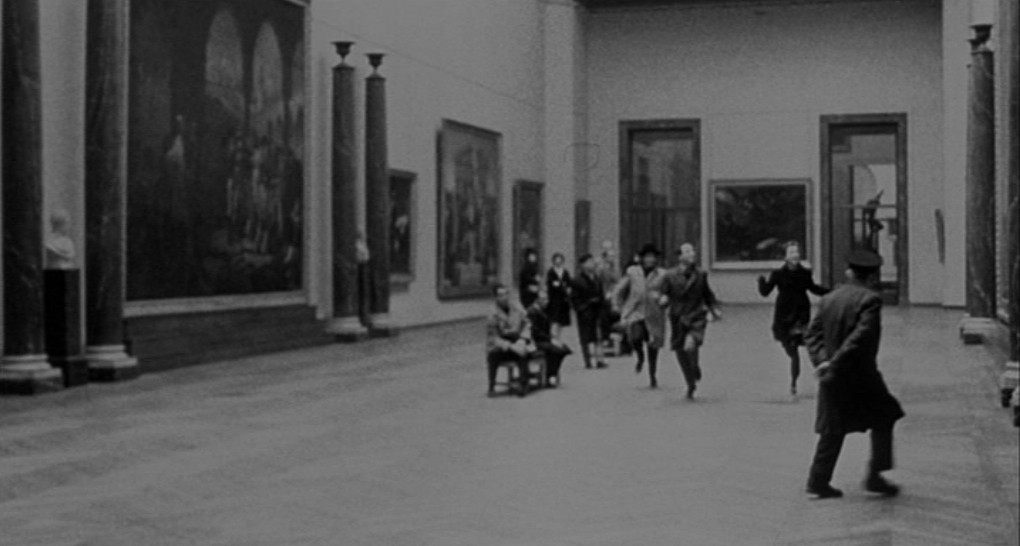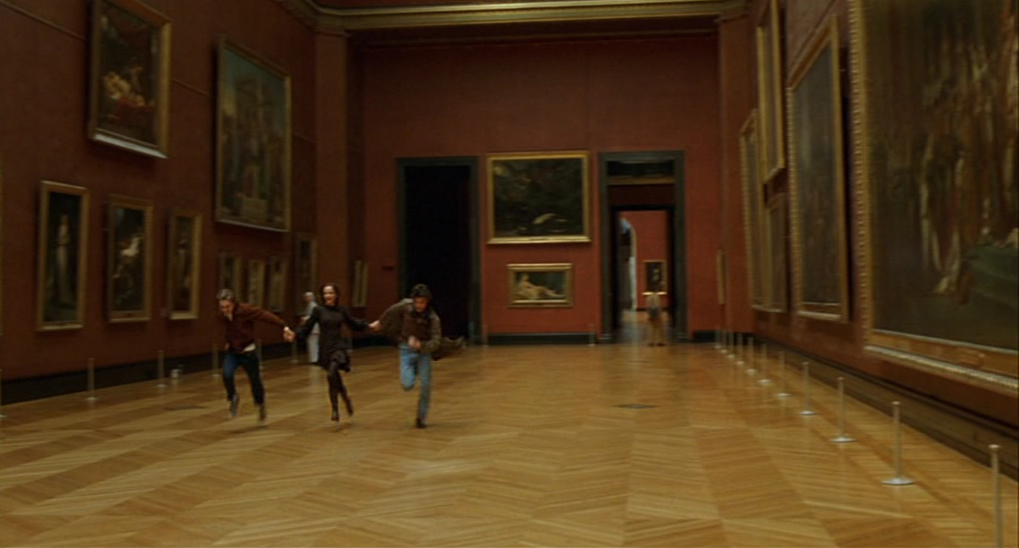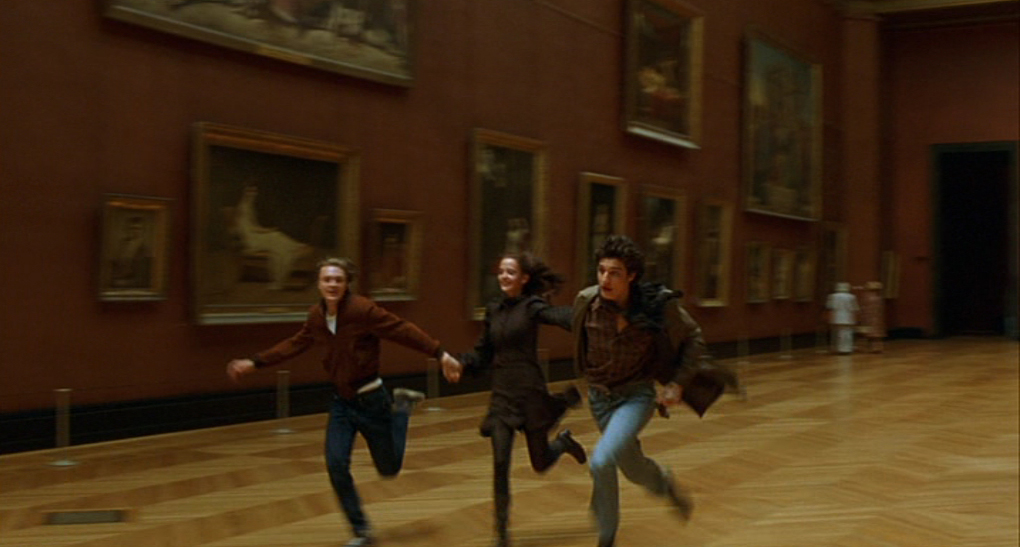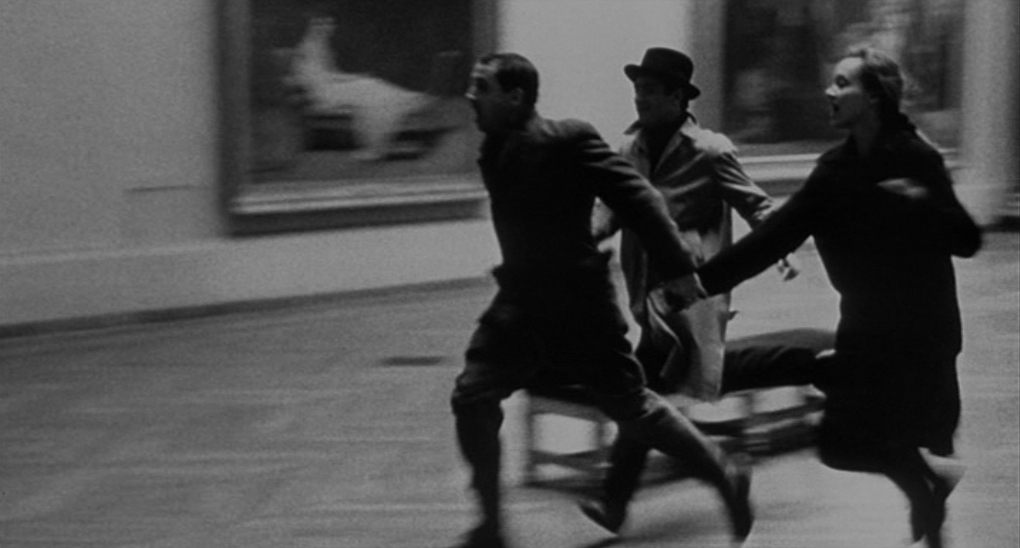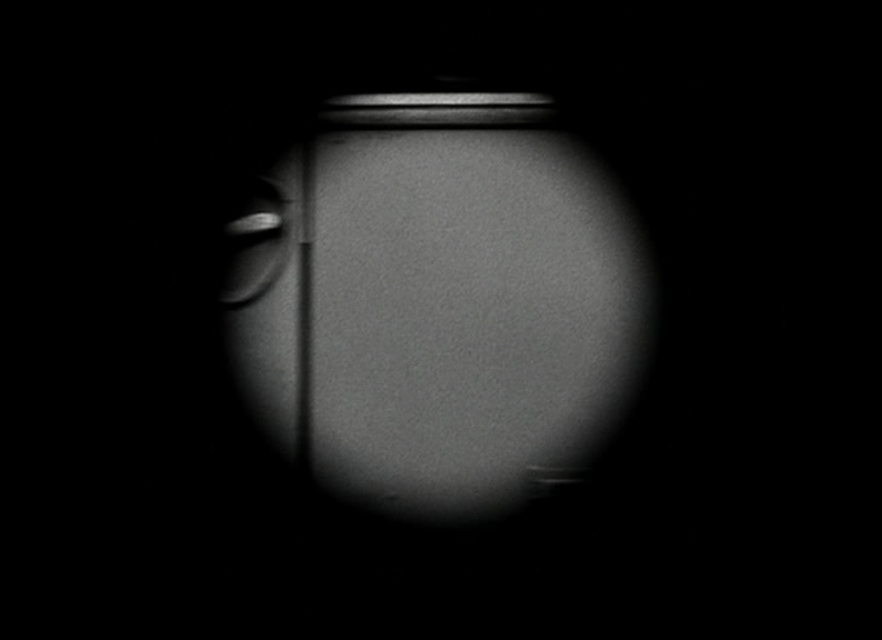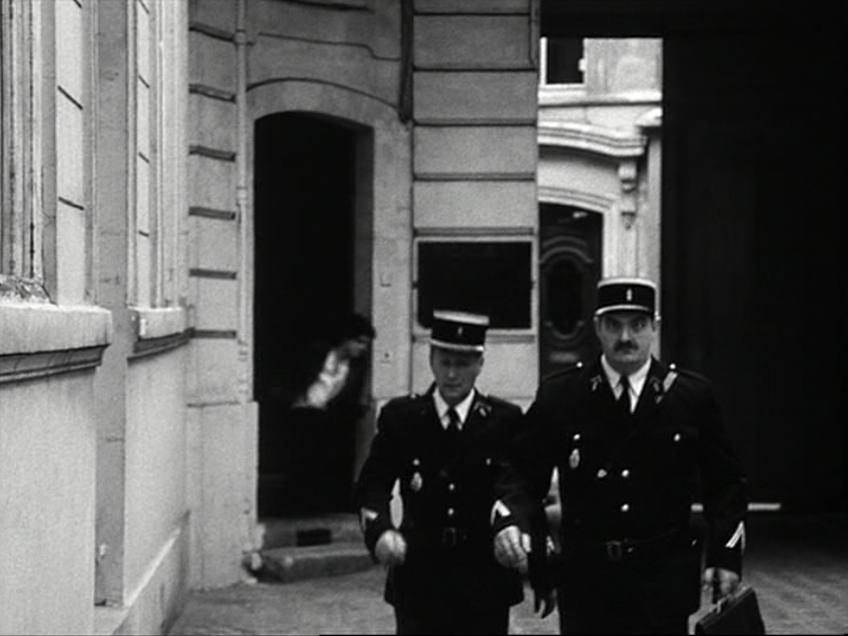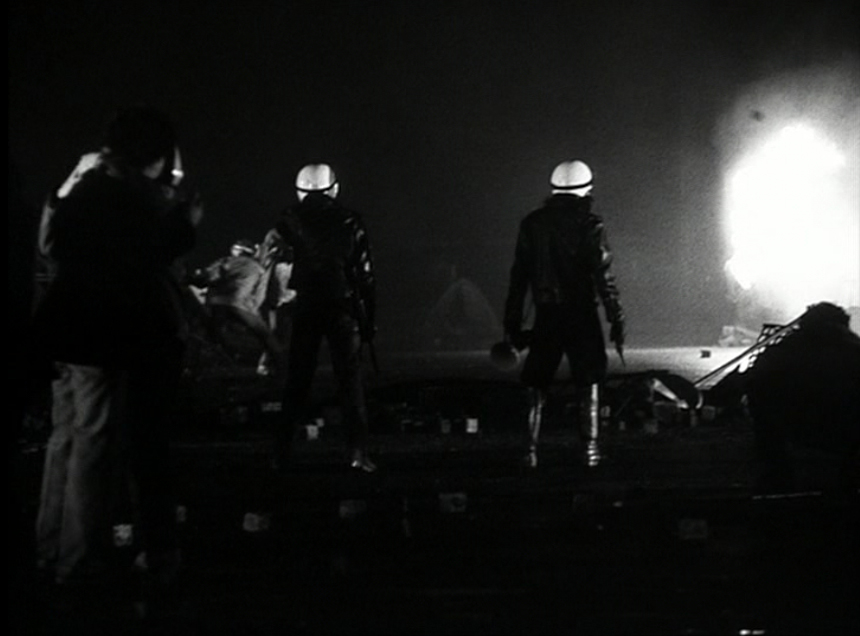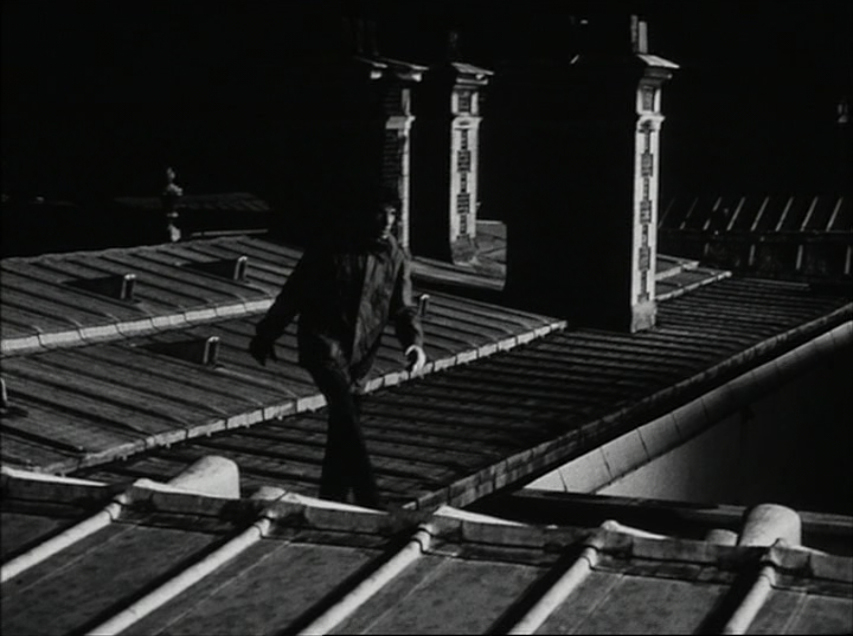Cinema/History: Philippe Garrel, Bernardo Bertolucci and May 1968
Michael Leonard
Cinema is by now a part of our memory. It is an attempt to rebuild our imperfect memories. In that respect it can be fiction. I do not think art represents history, I think it is a part of it (Philippe Garrel).[1]
During the events of May 1968, the French film industry united in solidarity with those who had gone on strike, establishing the Estates General of Cinema (Les États Généraux du Cinéma Français) and occupying the IDHEC (Institut des hautes études cinématographiques), and the CNC (Centre national de la cinématographie). [2] James S. Williams notes a particular consequence of this decision to occupy: “Suffice to say, and to (Serge) Daney’s eternal regret—almost no films of the May events were made at the time, with the exception of the collectively made ciné-tracts and 16mm documentaries such as William Klein’s Grands soirs et petits matins (1968-1978)” (266). The absence of films that provide testimony to the events contrasts with the vast catalogue of books published on the subject, which has led Margaret Atack to describe May 1968 as “a monstrous library”, noting that by the end of October 1968 one hundred and twenty books had already been published on the subject, and that this proliferation has continued ever since (7). Given this, the appearance of Philippe Garrel’s Les Amants réguliers (Regular Lovers, 2005)and Bernardo Bertolucci’s The Dreamers (2004), two works that return to consider the events more than three decades later, represents a significant contribution to the recollection of a moment in history that had gone largely unaddressed by the cinema. Their significance is heightened by the fact that the events of May 1968 still have the capacity to expose divisions within France. The residual hostility towards this anomalous moment in recent French history is made most evident by an electoral promise by the current French president to “liquidate the legacy of May 1968” (“Nicolas Sarkozy veut ‛liquider’ l’héritage de mai 68”). [3]
Although both films have been marketed as being “set in” and “about” May 1968, neither spends a great deal of time representing the events, nor can either film be described as providing a strong polemic about the political stakes associated with the period. However, their critical importance lies in the formal strategies that they adopt in evoking this period, which create contrasting temporal landscapes and reveal radically different conceptualizations of the workings of history. These divergent temporal landscapes are configured in each by differing approaches to film citation, which can be termed as metonymic in the case of Bertolucci and metaphoric in the case of Garrel. Metonymic citation refers here to the use of extracts from other films, which are incorporated within The Dreamers, denoting the original works from which they are drawn. Metaphoric citation indicates the more subtle use of film citation in Les Amants réguliers that emerges in the indirect allusion to other cinematic works through stylistic echoes and resonances.
By exploring these different approaches through an in-depth analysis of the openings to each film, I will contest that Bertolucci’s method of cinematographic citation is intrinsically conservative—reactionary even—implying a historical linearity that evokes the “pastness” of May 1968 and its significance as a piece of heritage rather than as part of an ongoing historical process or dialectic. I will argue that, by contrast, Garrel’s practice of citation generates a heterochronous form that constitutes a challenging and subversive testimony to May 1968 by evoking its continued presence.
Jean-Luc Godard’s Histoire(s) du cinéma (1988-98) provides a useful touchstone to contextualise the particular approaches employed by Garrel and Bertolucci. In this work, Godard seeks to merge the history of cinema and that of the twentieth century through a mosaic of images and sounds drawn from the cinema that the century has produced (and the “century” as produced by the cinema), as well as from art history, photography, video and television. Both Garrel and Bertolucci seek simultaneously to provide a testimony to May 1968 whilst combining this with a history of the cinema, in such a way that the cinematic past and the “real” past become conflated and interchangeable. Godard’s polemic that the cinema is not just a product of history, but that history is also a product of the cinema, is important for understanding the particular relationship that each of the works considered bears to the cinema and to history. Furthermore, the citational approaches that Godard adopts in Histoire(s) du cinéma provide a means of distinguishing between those of Bertolucci and Garrel, as well as informing an understanding of the inherent conservatism of the former and radical nature of the latter.
Among the numerous allusions to the history of cinema drawn in Les Amants réguliers, Jacques Rivette’s Paris nous appartient (1961) stands out as a significant point of reference.In the course of the article, I will reflect on the relationship between Rivette’s film and Garrel’s, noting in particular their shared indebtedness to film history, as well as their promotion of the cinema as a medium for restoring that which is occluded in history and reframing our relationship with the past. This serves in contradistinction to the tendency of Bertolucci’s film to construct a historical linearity through its citational methods, which separates the past from the present and is ultimately complicit in foreclosing a dialectic between these temporalities.
Faux amis: Further Comparisons Between The Dreamers and Les Amants réguliers
Before analysing in detail the citational differences between the films, it is necessary to acknowledge the uncanny proximity of their relationship, notably in terms of casting and production history. This serves, paradoxically, to heighten an appreciation of the considerable gulf between them as regards citation. Furthermore, to provide grounding for an analysis of how they relate to film history, it is important to provide some details of the different stages of the events concerned and how the films depict the civil unrest associated with May 1968.
In both films, Louis Garrel, the son of Philippe Garrel, performs a leading role. He plays Théo, the twin brother of Isabelle (Eva Green), in The Dreamers. In his father’s film he incarnates François Dervieux, a young poet who is one of the “regular lovers”alluded to in the film’s title, with Lilie (Clotilde Hesme), a sculptress. When discussing the making of Les Amants réguliers during a press conference at the Venice Film Festival, Louis Garrel recalls that, in the course of filming a long sequence on the barricades, he found himself face to face with the same CRS (Compagnies Républicaines de Sécurité) riot police he had encountered during the filming with Bertolucci. He explains, with noticeable amusement, that this was because his father arrived during the filming of The Dreamers to “steal” certain elements from the shoot, including actors and props. Philippe Garrel adds to this account by stating that he made his film in the manner of a Hollywood B Movie, closely following the shooting schedule of Bertolucci’s film and buying wardrobes of leftover clothing for use in his film. He also expresses his gratitude to Bertolucci for having trained his son to perform in front of a camera (Festival de Venise,2005). These accounts suggest an intimate relationship between Garrel’s film and Bertolucci’s, revealing how the works are physically intertwined with one another.
As has already been made clear, the films are bound by the context of May 1968, however each emphasises different stages of the events. Bertolucci deals with the avant mai, starting in March 1968 with the Langlois affair, when the decision of Minister of Culture André Malraux to depose Henri Langlois as Director of the Cinémathèque sparked a mini-rebellion and street protests that preempted the broader student and worker strikes that would ensue. This serves as a backdrop to an encounter between three cinéphiles, American exchange student Matthew (Michael Pitt) and twin brother and sister Isabelle and Théo. The three gradually retreat into a fantasy world, removed from the activity in the streets, which they nurture in the apartment of the twins’ parents, who have left on holiday for a month. It is evident here that Bertolucci’s film is indebted to Jean Cocteau’s Les Enfants terribles (1929), a novel later adapted into a film of the same title by Jean-Pierre Melville in 1950. In the retreat of brother and sister Elisabeth (Nicole Stéphane) and Paul (Édouard Dermithe) into an elaborate private world inside their family’s bourgeois apartment, and the complications provoked by the inclusion of Gérard (Jacques Bernard), an outsider, the novel and film can be considered a significant influence on Bertolucci’s film. In The Dreamers this fantasy world is finally destroyed by the eruption of the violence of May. Garrel’s work, similarly, begins on the eve of the events of May 1968 and depicts the lives of a circle of young artists and radicals brought together by the events. Once again, it features a place of retreat for the youths to gather, an apartment inherited by the young, wealthy Antoine (Julien Lucas), who functions as a patron of the group. The film deals also with the après mai and the fear and deflation that eventually result in the dissolution of the loose circle during the months and years that follow the failed revolution.
The direct evocation of the civil unrest associated with May 1968 is quite limited in both films. In The Dreamers, it is restricted to a brief dramatic finale when the twins and Matthew emerge onto the street and Théo throws a Molotov cocktail in the direction of the CRS. This final sequence concludes with a slow-motion frontal shot of the CRS advancing on the protesters and rioters. Aside from this, the only other visual reference to the events of May 1968 occurs when Matthew and Isabelle are shown in close-up kissing, whilst leaning against the window of an electrical store. The shot pans to the right to reveal a television screen behind them, featuring news reports of demonstrations and protests that have been occurring elsewhere on the streets, serving to underpin the peripheral position of the political struggle of May 1968 to the imaginative world of the three “dreamers”. In Les Amants réguliers,the events are evoked exclusively in the first chapter of the film entitled “Les espérances de feu” (“Hopes of fire”). Referring to this, and the caesura between 1968 and the years that follow, Stéphane Delorme remarks how Garrel joins together the political revolution and the intimate revolution by opposing “the condensation of May in one epic night to the timeless day-to-day lives of a group of dreamers who elegantly transform opium into love and love into opium” (12). The fact, however, that the political turmoil is marginalised in The Dreamers and rapidly eclipsed in Les Amants réguliers (in addition to the other parallels mentioned that suggest a close affinity between the works) serves only as a foil to expose their antithetical identities. I will address this argument through an exploration of the two films’ respective relationships with film citation.
The Dreamers: Film Citation through Metonymy
In The Dreamers, Melville’s Les Enfants terribles, which is alluded to indirectly via its narrative and stylistic resemblance to Bertolucci’s film, appears to be the sole exception to a metonymic citational approach. The Dreamers is marked, instead, by the direct citation of other film works, an approach that tends to reinforce the temporal disjunction between the world of the three main protagonists and that of the films referenced. It opens with a vertical, downward tracking shot of the Eiffel tower, before cutting to the American exchange student Matthew walking over the Seine towards the Cinémathèque during the unfolding of the Langlois Affair. This journey is intercut with footage of Matthew, Isabelle and Théo at a screening of Sam Fuller’s Shock Corridor (1963). As they sit watching from the front rows of the auditorium, the roaming camera circulates between images of the three spectators, glimpses of Fuller’s film on the screen, and the light emerging from the projector.
Following this is a montage sequence of events, this time occurring outside the entrance to the Cinémathèque, introduced by the retrospective voice-over of the American protagonist: “But there was one evening in the spring of 1968 when the world finally burst through the screen”. In archive colour footage, Henri Langlois emerges, walking up the steps of the Palais de Chaillot, juxtaposed with contemporary footage of Jean-Pierre Léaud and Jean-Pierre Kalfon outside the old Cinémathèque delivering their 1968 speeches that denounced the move by Malraux to depose its director. The speeches are intercut with fragments of black-and-white archive footage of the original speeches made by Léaud and Kalfon in 1968, supplemented with shots of Jean-Paul Belmondo, François Truffaut and others arriving at the Cinémathèque in support of Langlois in March 1968.
The opening of the film thus establishes a temporal pattern that moves between the excerpts from Shock Corridor, the present tense of the film and the past events to which it alludes, summoned in the archival footage of the French film community taking to the streets.The images of Léaud and Kalfon as old men in the contemporary footage reinforces how Bertolucci firmly roots the events of May 1968 in the past. The citational approach introduced here recurs throughout The Dreamers and is used formally to bind the three characters through their shared cinephilia. Allusions to other cinematic works occur through devices such as a poster for Jean-Luc Godard’s La Chinoise (1967) on the bedroom wall of Théo and Isabelle, which is seen in numerous shots, extending to extracts from films that intersperse the narrative. These extracts, which surface as though summoned by Matthew and the twins, are often intercut with scenes in which the three either make reference to the film in question, or playfully re-enact a sequence from it. Their play functions as a mise en abyme of Bertolucci’s project to toy with the viewer by interspersing his work with a range of extracts drawn from film history. These include excerpts from À bout de souffle (Jean-Luc Godard, 1960) and Bande à part (Jean-Luc Godard, 1964), iconic works evoking the cinema of the nouvelle vague. The other films referenced through direct citation are drawn mainly from Hollywood in the late 1920s and early 30s, including The Cameraman (Buster Keaton, 1929), Queen Christina (Rouben Mamoulian, 1933), Top Hat (Mark Sandrich, 1935), City Lights (Charles Chaplin, 1931), Blonde Venus (Josef von Sternberg, 1932), Freaks (Tod Browning, 1932)and Scarface (Howard Hawkes, 1932). This selection suggests a strong identification with a cinephilia fostered by the Cahiers du cinéma journal under the aegis of Eric Rohmer, its director between 1958 and 1963, when it championed a “strict pro-Hollywood line” prior to its political phase of opposition and protest under the direction of Jacques Rivette (Derek Schilling 86). The films suggest Bertolucci’s attachment to a classical cinema and, more particularly, to a cinephilia that was largely destroyed by the events of May 1968, anticipated perhaps most strongly in the conclusion to Godard’s Week-end (1967)with the end-titles proclaiming “the end of cinema”. [4]
The first example of this direct citational approach, following the reference to Shock Corridor, occurs when Isabelle walks along the Seine with Théo and Matthew on the evening of their first encounter. She declares to Matthew: “I entered this world on the Champs Élysées 1959… and you know what my first words were? ‘New York Herald Tribune, New York Herald Tribune.’” Once enunciated, these words, taken from À bout de souffle, summon a sequence from that film. Isabelle’s steps across the bridge over the Seine are intercut with Jean Seberg’s first appearance in Godard’s film, pacing the Champs Élysées as a newspaper seller. Isabelle’s voice merges with that of Seberg’s and Martial Solal’s original score. Perhaps the most striking example of this citational method occurs when Théo and Isabelle propose to reproduce the feat of Odile (Anna Karina), Arthur (Claude Brasseur) and Franz (Sami Frey) of running through the Louvre in Godard’s Bande à part. As they discuss their plan to better the record of nine minutes and thirty-seven seconds, their conversation is punctuated by fragments of this iconic moment in film history. Then, as they repeat the run through the Louvre, the original extract from Godard’s film is intercut frame for frame with the reenactment of the three dreamers.
What implications does this citational approach have in terms of the film’s relationship to the history of cinema and to the memory of May 1968? As noted previously, the film extracts are quite clearly signalled to the viewer, introduced or preempted by the protagonists’ conversation, or reenactment. As the film alternates between the world of the three characters, i.e. a reconstruction of Paris in the lead-up to the events of May 1968, and that of the various film extracts, it imposes a division between the two. The colour and texture of Isabelle and Théo’s apartment often jars with the black-and-white film extracts, reinforcing a sense of their mutual exclusivity. At no time do these worlds become confused visually in a way that implodes this binary division of looking back from the vantage point of the present on an already solidified, decided past. Furthermore, the allusions to these works through direct citation tend to fetishize these filmic moments and characterise the nostalgia that pervades the film, heightened through the retrospective yearnings of the young American in voice-over for a time fresh with the possibility of change. Rather than exploring the past, composing a complex temporality that implies its continued presence, the work is burdened by an inclination towards tautology, a reiteration through direct citation that establishes a clear boundary between past and present. This conservatism appears to be reflected in Bertolucci’s comments on the events of May 1968. In an audio commentary provided for the DVD version of The Dreamers,he observes: “There hasn’t been a real revolution and I can tell you thank God, today. But in fact, our way of life, our interpersonal relationships, our ways to relate to each other today, the way the young generation of today lives and is developing, let’s say it’s quite free. I think it's something that was born, was thought, was designed, was imagined in ‘68” (Commentary by Bernardo Bertolucci, Gilbert Adair and Gerard Thomas, 2004). This combination of relief at the failure of the revolution in May 1968, and simultaneous complacency in terms of the freedom that the events have inaugurated, is consistent with his approach to film citation in The Dreamers and the consequences of the historical linearity it imposes.
It is perhaps no coincidence that it is the cinema of Jean-Luc Godard that dominates the citations in The Dreamers, given Godard’s seemingly instinctive tendency to draw upon and cite other films and art works throughout his oeuvre. However, Godard’s approach to citation, particularly as evidenced in Histoire(s) du cinéma,differs noticeably from Bertolucci’s. An example to illustrate this is a much discussed sequence from section 1 (a) of that film, “Toutes les histoires”, in which a series of dissolves intercut between an image of bodies in a Nazi concentration camp taken from George Stevens’s war footage and shots from Stevens’s A Place in the Sun (1951), starring Elizabeth Taylor and Montgomery Clift. An image of Mary Magdalene, a detail from Giotto’s Noli me tangere (1304-6), is superimposed over the images, forming a further visual layer. The sequence is accompanied by Godard’s voice-over that concludes with: “Oh what a marvel to be able to look at what we don’t see! Oh the miracle of our blind eyes”,[5] which seems to allude to the gaze of Giotto’s Mary Magdalene, the figure positioned as though watching over the diverse visual landscape. The use of video to record and archive these images from film history results in the altering of their aesthetic appearance, qualifying the “directness” of the quotation. Furthermore, as is evident in the example provided, Godard’s images are constantly being modulated and contaminated by competing signifiers through the superimposition of films, photographs, art historical images, text and voice-over in Histoire(s) du cinéma, meaning that his citational method is never direct or logical in the same way as Bertolucci’s. Instead he creates a complex, associative and often indecipherable cinematic (and narrative) landscape radically different from that of Bertolucci’s film.[6]
“The run through the Louvre”: Stills from the sequence in The Dreamers in which extracts from Jean-Luc Godard’s Bande à part are intercut with Bertolucci’s colour replication of the original. Source: Twentieth Century Fox.
Les Amants réguliers: Film Citation through Metaphor
In contrast to The Dreamers, Les Amants réguliers adopts a metaphorical approach to film citation, alluding to other works of cinema obliquely, through stylistic echoes and resonances. Although differing somewhat from Godard’s use of video in Histoire(s) du cinéma to cite other film-works, both are bound by the indirectness of their citational approach. Furthermore, the subtle, associative aesthetic of Garrel’s film means that several film allusions are often incorporated simultaneously, an approach that results in a coexistence of multiple time frames in the work. This serves as a parallel to the videographic superimpositions of Godard’s film, which similarly facilitate a temporal complexity that is foreclosed in Bertolucci’s film because of his use of direct citation. An analysis of the prologue to Garrel’s film will clarify some of these points.
The opening titles of Les Amants réguliers emerge silently in black Times New Roman script formed against a white backdrop. The minimalism recalls the titling Garrel uses in other films including L’Enfant secret (1983) and Elle a passé tant d’heures sous les sunlights (1985). The titles give way to a long shot of the banks of the Seine at night, the austere black and white cinematography contrasting with the rich colour of The Dreamers. The camera pans slowly to the left, coming to rest on a bridge linking the banks. The street lamps on the bridge, overexposed, appear surrounded by an indistinct halo of light pressing against the darkness of the city. This image is immediately reminiscent of nighttime shots of the Seine in Eustache’s La Maman et la putain (1974): in Debord’s In girum imus nocte et consumir igni (1975).
The opening shot cuts to an apartment staircase. A group of young people are observed from above ascending a first flight of stairs. The mobile shot adjusts to observe them from below ascending a second flight of stairs. Recognising here a deliberate allusion to the cinema of Jean Eustache, the critic Gilles Grand writes: “By the staircase, climbed by five boys, seen descending and then ascending in a mobile shot, which is the second of the film, the film cites the sixth shot of La Maman et la putain (1973), in which Léaud on his own descends similar stairs” (76). In this visual echo, Garrel indeed displays an affinity with Eustache’s chef d’oeuvre. Nevertheless, as with the treatment of the Seine, the allusions and citations in the work are multiple and find echoes in a number of other films, most notably, the recurrence of staircases in Paris nous appartient (1961), a film that exerts a significant influence over this work. It also looks back to Garrel’s second feature film Le Révélateur (1968), made during the last days of May 1968, where staircases serve a symbolic function suggesting the passage between the real and the dream world.
After shots of a gathering between François and several friends in a room, a burlesque sequence follows where he plays hide and seek with a gendarme, who arrives at his apartment to summon him for military service. When the gendarme returns with reinforcements to arrest him, four rapid cuts take François from his window staring down at a street performer to him disappearing in the background of the frame as the oblivious officers approach in the foreground. The humour of this episode is immediately reminiscent of the cinema of the nouvelle vague. In particular, it conjures memories of a sequence from Les Quatre cents coups (François Truffaut, 1959) in which Antoine Doinel (Jean-Pierre Léaud) and his classmates are taken out jogging during a Physical Education lesson. An aerial shot of the joggers tracks backwards and forwards to capture groups breaking off at intervals to hide in doorways and cafés, leaving the unsuspecting teacher jogging alone in the street.
In the next sequence, François and a friend meet on a staircase and discuss the rioting of the night before. This fades to black and an iris-in opens to a medium shot that tracks alongside police vans and CRS troops gathering into formation on a bridge over the Seine. The use of the iris shot to realise this transition immediately recalls a device much celebrated by the nouvelle vague filmmakers, itself representing a homage to early cinema. As the shot tracks dreamily along the side of the police, observing a superior reprimanding an officer for being late, a voice-over intones: “Enough with repetition. Advance”. An iris-out fades to black and the prologue to the film concludes. This concluding statement has the pithiness of a revolutionary slogan that one might imagine daubed on a wall in Paris during May 1968. However, it is of central importance to Garrel’s film in terms of how it figures the issues raised with regard to the challenges of approaching the past and negotiating the relationship between cinema and history. Occurring over a reconstruction of a police formation during the events, and at the conclusion to a prologue that has already displayed a self-conscious repetition of elements and strategies from the nouvelle vague and other films, it appears anomalous. Nevertheless, it embodies an enquiry central to the film, namely, how is it possible to advance something new by citing existing works from the history of cinema. In framing a challenge to consider the past and this significant moment in recent French history, without resorting to nostalgia or clichéd representation, the slogan can be interpreted as an indictment (intentional or otherwise) of the approach adopted by Bertolucci and his direct citation of cinematic works.[7]
Garrel’s approach to referencing other film works succeeds in using the history of cinema to provide a challenging and transformative approach to remembering the events of May 1968. The indirectness of Garrel’s allusions creates a work that feels like a number of different films producing a complex temporality that emerges through the subtle shift from one allusion to the other, or the overlapping of several allusions at once. In addition to the allusions discussed previously, it reveals a significant indebtedness to early cinema. This emerges in the silence that predominates in the film, with images taking precedence over words, visual language over speech and dialogue. Specific sequences are reminiscent of the cinema of Marcel L’Herbier, which similarly captures the visual emphasis of the silent era. When, for instance, François takes refuge on a rooftop by night after fleeing from police when they storm the barricades, the visual treatment invokes sequences from L’Herbier’s La Nuit fantastique (1942) where a dreamer (Fernand Gravey) wanders the Paris rooftops by night, bathed in bright moonlight and contrasting dark shadows.
Observing the peculiar oneiric quality of the film, Stéphane Delorme notes the allusions to other works: “Les Amants réguliers dreams at times of other films as François, dozing on the barricade, dreams of another revolution … a dream of a revolution for a revolution dreamed” (12).[8] As Delorme traces the nuances of reference, he highlights significantly how the associative aesthetic developed by Garrel encourages the viewer to locate and imagine a range of allusions, through the subtle assemblage of multiple forms. Describing, for instance, the image of the barricades that opens the second chapter of the film, he writes: “Two white helmets covering sombre shocks of hair, agitate in the night. The bikers of Cocteau, new incarnations of Orpheus, throw paving stones in the middle of ruins” (14). Jean Cocteau’s Orphée (1950) may or may not be a deliberate allusion here but the reference reveals how the indirectness of the allusions in the film invites such speculation, something that is foreclosed in The Dreamers by Bertolucci’s direct allusion.
Previously in this analysis, the absence of films made during the events themselves has been noted. However, it is important to point out that Garrel had been responsible for making one of the Actualités révolutionaires (revolutionary newsreels) during May 1968, a work which was described by Godard as the most outstanding to have been made about the events (Garrel & Lescure 11). Actua I (1968), the title given to this film, was shot exceptionally in 35mm but it was destroyed when sent to laboratories in Italy for development. Garrel reflects on this work in an interview with Stefan Grisseman: “I did shoot a lot of documentary footage of the events of May ‘68 myself in 35mm, but unfortunately I lost all the negatives of that material. So I tried to reconstruct those images now, three-and-a-half decades later. I tried to shoot them exactly the same way again. In that sense, Les Amants réguliers is less autobiographical than a reproduction of the films I shot at that time” (Grissemann, “History is the Enemy of Art”). Thus, this lost footage from the time of the events forms a further allusion that Garrel weaves into his work, enriching the vertiginous, temporal complexity of the film.
A series of stills illustrating Garrel’s use of indirect citation. These include an iris-out, referencing the nouvelle vague, and a burlesque sequence showing François Dervieux in the back of the frame evading the approaching Gendarmes. The white helmets of two rioters in Les Amants réguliers resembling the bikers in Cocteau’s Orphée. François Dervieux on the rooftop, an echo of Feuillade’s La Nuit fantastique. Source MK2.
Les Amants réguliers and Paris nous appartient
Aside from the allusions already discussed, one of the considerable points of reference in Garrel’s film, which is unobserved by Delorme, is Jacques Rivette’s Paris nous appartient. The central protagonist of Rivette’s thriller, the young and innocent student Anne Goupil (Betty Schneider), becomes involved in a conspiratorial network as she seeks to resolve the mysterious death of a Spanish dissident. The numerous gatherings in cramped interiors, the use of black-and-white high-contrast cinematography, in addition to a large proportion of close-ups, create a sense of intimacy among the group, bound against an external menace. These elements resurface in Garrel’s film in the regular gatherings of François, his lover Lilie and other friends, in the haven of Antoine’s apartment. Garrel’s predilection for portraiture and tightly framed shots reinforces the closeness and singularity of the group.
Rivette’s thriller combines a tone of gravitas with moments of lightness and humour. This humour arises from the cameo appearances of various nouvelle vague members, most notably a comical sequence where Godard tries to chat up a friend of Anne’s on a café terrace. The garish, childlike portraits that surround the apartment walls of the American exile, Phillip Kauffman (Daniel Krohem), are at once comical whilst simultaneously suggesting a disturbed mind. Once again this distinct tonal register is evident in Garrel’s film, incorporating burlesque sequences like the example discussed previously, in addition to evoking the fear and despair that envelops the group following the initial hope heralded by the events. This quality of the workis summarised succinctly by Cyril Neyrat: “Conjuring the two attitudes, the film does not cease to oscillate between a religious solemnity and a profane lightness” (17). Through this tonal oscillation, which pervades the film, Les Amants réguliers returns the spectator to Rivette’s first feature film.
Finally, the unique oneiric quality that is definitive of Garrel’s film strongly resembles the atmosphere of Rivette’s film. Gilles Deleuze foregrounds the capacity of fantasy and dream in Rivette’s film-making to create a substantial, critical reality, using the metaphor of a stroll to capture the journey on which Rivette takes his viewer: “Already in Paris nous appartient, the stroll culminates in a twilight fantasy where the cityscape has no reality or connections other than those given by our dream” (10). Deleuze argues that Rivette is less interested in a representation of reality than in constructing a dreamlike fantasy, in order to interpret the real. The metaphor of a stroll evokes this singular quality that is definitive of Les Amants réguliers, a film that wanders through the “real” past, and through the cinematic past, in a distinct, aleatory fashion.
How can these subtle allusions to Paris nous appartient be explained? There are a number of possible answers to this. One is that, like Les Amants réguliers,Rivette’s work is also a complex work of citation. The film’s labyrinthine plot is comparable to Fritz Lang’s Das Testament des Dr. Mabuse (The Testament of Dr. Mabuse, 1933); also, Michel Marie observes how it draws upon Feuillade filming Les Vampires (1915) in a deserted city and René Clair’s Paris qui dort (Paris Asleep, 1924). Rivette assembles these influences to consider the traces of the past and the political climate surrounding the making of his film. Marie writes:
Rivette’s Paris is a dark maze where intricate plots develop … All the characters feel threatened. The climate evokes the witch-hunts in the United States, the crushed revolution in Budapest, but the film also gives a remarkable account of the intellectual mood at the end of the Fourth Republic in France with all its military and political plots surrounding the Algerian War. (75)
Thus the cinema for Rivette becomes a way of resurrecting events, repressed and forgotten. Fiction becomes a way of reflecting upon, debating and providing witness to the past. Rivette’s personal reflection on the origins of his film is noteworthy in this respect when he states: “The origin of Paris nous appartient—and this may seem a bit pretentious or even monstrous—was the Budapest crisis at the end of 1956” (Aumont, Comolli, Narboni, and Pierre 26). Compared to many of the films of the nouvelle vague that look forward to the youth culture and rebellion of the 1960s, Rivette’s film reveals a responsibility to consider that which is obscured in history. Garrel’s personal reflections on Les Amants réguliers reveal a position that mirrors that of Rivette:
Historically May ‘68 has been a great defeat. What makes my film optimistic, though, is the sheer fact of its existence. It is positive to know that you cannot censor this era at last. Art always finally tries to re-establish different truths of events; there’s never just one truth to an event, after all, but always many. (Grissemann, “History is the Enemy of Art”)Garrel reveals an awareness of the climate of censorship regarding May 1968 and the added responsibility of the cinema to provide a testimony to it. Furthermore, he lays claim to the political power of art and to the labour of fiction, as defined by Jacques Rancière, where fiction does not designate the imaginary as opposed to the real but involves a dissensual “reframing of the ‘real’” (141). It is in this sense that strong affinities emerge between Paris nous appartient and Garrel’s film, making it a natural source of reference.
Conclusion
As argued in this analysis, the differing approaches to citation in Garrel’s film and Bertolucci’s establish opposing relationships with the memory of May 1968. The cinephilia that defines The Dreamers speaks of a nostalgic relationship to the past and to the cinema. The direct, metonymic allusions to works from the canons of Hollywood and French cinema confirm an historical linearity that separates the events of May 1968 from the present. Garrel’s associative aesthetic, developed through subtle and shifting allusions to a range of films, including his own, counteract the nostalgic, mythologizing tendencies of Bertolucci’s work. The films of the past become resources for composing a constantly shifting temporal configuration, a heterochronous form that defies a simple linear relationship with the past and implies the continued presence of May 1968. Most significantly, in terms of the allusions he draws, Garrel returns to the work of Rivette, which reveals a similar indebtedness to cinema history and to the cinema as a medium for restoring that which is occluded in history and reframing the real.
Notes
1. The quote is taken from the interview with Stefan Grissemann, “History is the Enemy of Art: Interview with Philippe Garrel on Les Amants réguliers”. Cinemascope, Issue 25. Jan. 2006.
2. The IDHEC and the CNC constituted, respectively, France’s major film school and its major public funding body for film.
3. In the article Sarkozy is quoted as saying: “May 1968 has imposed on us an intellectual and moral relativism … in this election it is about knowing if the legacy of May will be perpetuated, or if it must be liquidated once and for all”. His attack is influenced by academic accounts that have targeted the legacy of May 1968, most notably Luc Ferry and Alain Renault. La pensée 68: Essai sur l'anti-humanisme contemporain. Paris: Gallimard. 1985.
4. For a discussion of how the events of May spelt the end of a classic cinephilia see Antoine de Baecque. La cinéphilie. Invention d’un regard, histoire d’une culture 1944-1968. Paris: Fayard, 2003.
5. “O Quelle merveille que de pouvoir regarder ce qu’on ne voit pas! O miracle de nos yeux aveugles!’ These words are also a citation, drawn from Robert Bresson’s Le Journal d’un curé de campagne (1951), see Douglas Morrey, Jean-Luc Godard. Manchester: Manchester University Press, 2005. 225.
6. For a more thorough analysis of the sequence from Godard’s Histoire(s) du cinéma referred to here, in addition to a discussion of the critical debates that have surrounded his film, see Morrey, Jean-Luc Godard 219-230.
7. This would appear to mirror critical responses to Bertolucci’s film, including a review of the 2003 Venice film festival in Cahiers du cinéma that dismissed The Dreamers as “porno chic” and referred to the “heavy-handedness” of its citations of classical cinema. See Patrice Blouin and Jean-Marc Lalanne. “Paix et amour à Venise”. Cahiers du cinéma n° 583 (October 2003) 54.
8. Delorme’s article is littered with citations of its own, at times referring directly to related films and on other occasions using film titles as puns, in what constitutes a richly textured response to the film.
References
1. Aumont, Jacques, Jean-Louis Comolli, Jean Narboni, and Sylvie Pierre. “Time overflowing: Interview with Jacques Rivette”. Cahiers du cinéma, No. 204 (September 1968). Interview translated in Jonathan Rosenbaum. Rivette: Texts and Interviews. London: BFI, 1977. Print.
2. Atack, Margaret. May 68 in French Fiction and Film. Rethinking Society, Rethinking Representation. Oxford: Oxford University Press, 1999. Print.
3. de Baecque, Antoine. La cinéphilie. Invention d’un regard, histoire d’une culture 1944-1968. Paris: Fayard, 2003. Print.
4. Bertolucci, Bernardo, dir. The Dreamers. Twentieth Century Fox, 2004. DVD.
5. Blouin, Patrice and Jean-Marc Lalanne. “Paix et amour à Venise”. Cahiers du cinéma n° 582 (October 2003) 54-55. Print.
6. Cocteau, Jean, dir. Orphée (Orpheus). BFI,1950. DVD.
7. Commentary by Bernardo Bertolucci, Gilbert Adair and Gerard Thomas. (DVD extra on The Dreamers) Twentieth Century Fox, 2004. DVD.
8. Debord, Guy, dir. In girum imus nocte et consumir igni. Gaumont, 1975. DVD.9. Deleuze, Gilles. Cinema II: The Time Image. Trans. Hugh Tomlinson and Robert Galeta. London: Continuum, 2005. Print.
10. Delorme, Stéphane.“Les justes: 68 et après”. Cahiers du cinéma n° 605 (October 2005) 12- 15. Print.
11. Eustache, Jean, dir. La Maman et la putain. Les Films du Losange. 1973. Film.
12. Festival de Venise 2005. Press Conference at Venice Film Festival (extra on French DVD edition of Les Amants réguliers) MK2, 2006. DVD.
13. Feuillade, Louis, dir. Les Vampires. Gaumont, 1915. DVD.
14. Ferry, Luc, Alain Renault. La pensée 68: Essai sur l'anti-humanisme contemporain. Paris: Gallimard, 1985. Print.
15. Fuller, Sam, dir. Shock Corridor. Criterion Collection, 1963. DVD.
16. Garrel, Philippe, dir. Actua I, 1968. Film (lost).
17. ---. Les Amants réguliers. MK2, 2005. DVD.
18. ---. Elle a passé tant d’heures sous les sunlights. MK2,1985. DVD.
19. ---. L’Enfant secret. Philippe Garrel. 1982. Film.
20. ---. Le Révélateur. Revoir, 1968. DVD.
21. Garrel, Philippeand Thomas Lescure. Une caméra à la place du coeur. Aix-en-Provence: Admiranda/Institut de l'Image, 1992. Print.
22. Godard, Jean-Luc, dir. À bout du souffle. Optimum, 1960. DVD.
23. ---. Bande à part. Criterion Collection. 1964. DVD.
24. ---. La Chinoise. Optimum,1967. DVD.
25. ---. Histoire(s) du cinéma. Artificial Eye, 1988-1998. DVD.
26. Grand,Gilles. “Les barricades en sourdine”. Cahiers du cinéma n° 613 (June 2006) 76-77. Print.
27. Grissemann, Stefan. “History is the Enemy of Art: Interview with Philippe Garrel on Les amants réguliers”. Cinemascope, Issue 25. Jan. 2006. Web. 26 Dec. 2009.
28. Lang, Fritz, dir. Das Testament des Dr. Mabuse (The Testament of Doctor Mabuse). Eureka, 1933. DVD.
29. L’Herbier, Marcel, dir. La Nuit fantastique. 1942. Film.
30. Marie, Michel. La Nouvelle Vague: Une école artistique. Paris: Editions Nathan, 1997. Print.
31. Melville, Jean-Pierre, dir. Les Enfants terribles. BFI, 1949. DVD.
32. Morrey, Douglas. Jean-Luc Godard. Manchester:Manchester University Press, 2005.
33. Neyrat, Cyril.“De l’iconique à l'ironique”. Cahiers du cinéma n° 605 (October 2005). 16-18. Print.34. “Nicholas Sarkozy veut ‘liquider’ l’héritage de mai 68”. Nouvelobs.com en temps réel. 30 April 2007. Web. 6 Feb. 2010.
35. Rancière, Jacques. Dissensus: On Politics and Aesthetics. London: Continuum, 2010. Print.
36. Rivette, Jacques, dir. Paris nous appartient. BFI, 1961. DVD.
37. Schilling, Derek. Eric Rohmer. Manchester: Manchester University Press, 2007. Print.
38. Truffaut, François, dir. Les Quatre cents coups. MK2,1959. DVD.
39. Williams, James S. “Debates 1960-2004: The exercise was beneficial, Monsieur Daney”. The French Cinema Book. Eds. Michael Temple & Michael Witt. London: BFI, 2004. Print.
Suggested Citation
Leonard, M. (2011) 'Cinema/history: Philippe Garrel, Bernardo Bertolucci and May 1968', Alphaville: Journal of Film and Screen Media, 1, pp. 89–104. https://doi.org/10.33178/alpha.1.07.
Michael Leonard completed his MA in Film at Queen’s University Belfast, where he is currently engaged in PhD research focusing on the work of Philippe Garrel. He is particularly interested in theorising the relationship between cinema and politics, and other current research areas of interest include the cinema and cultural politics of Guy Debord and the Situationists.





